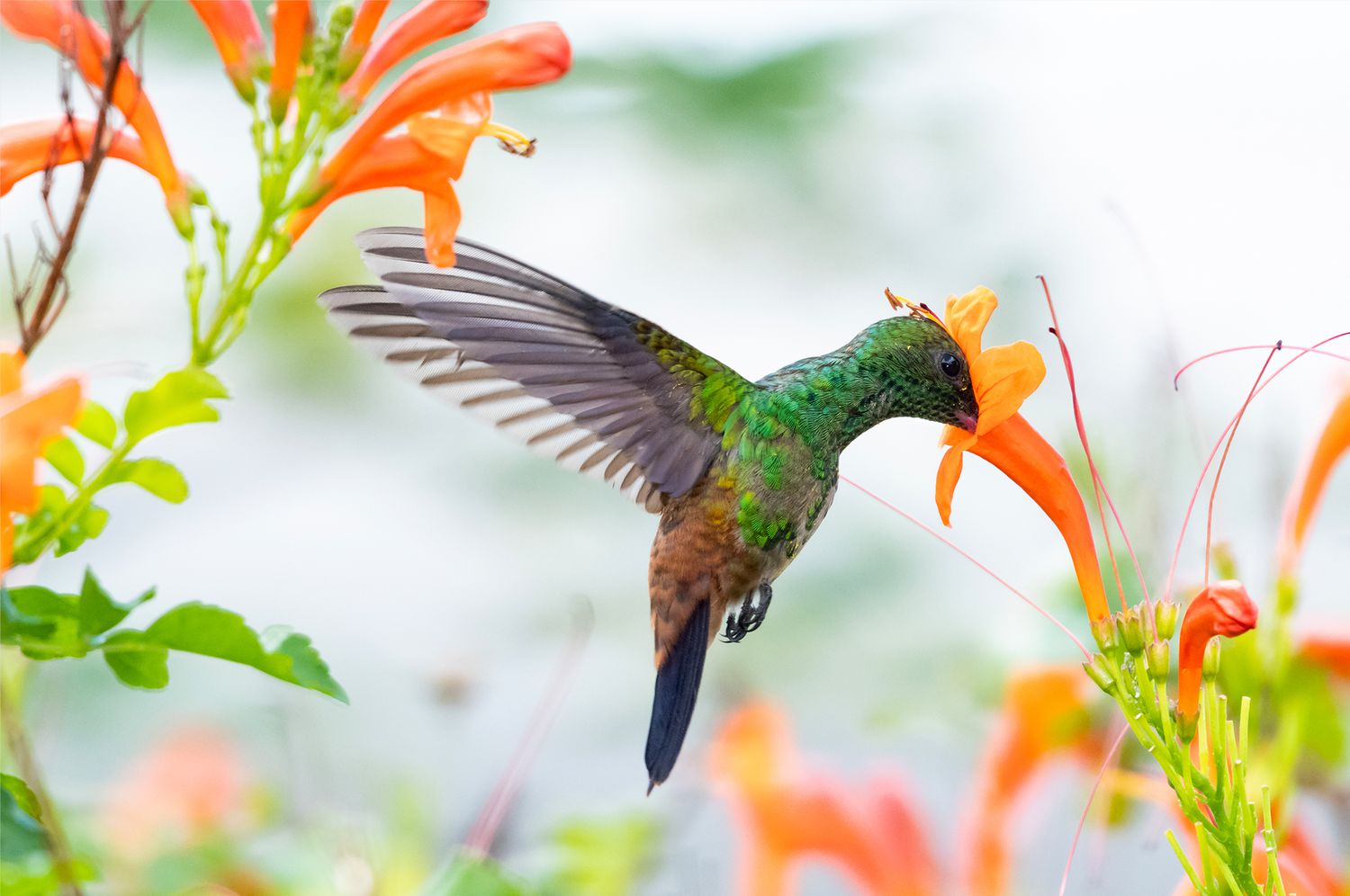
Attracting Hummingbirds to Your Garden: A Guide to the Best Nectar-Rich Plants
Hummingbirds are fascinating creatures that bring joy and wonder to any garden. With their incredible ability to hover, fly backwards, and beat their wings up to 80 times per second, these tiny birds are a delight to watch as they flit from flower to flower. But to attract these aerial acrobats to your garden, you need to provide them with the right plants that offer a steady supply of nectar throughout the growing season.In this comprehensive guide, we’ll explore the best plants to attract hummingbirds, their specific benefits, and how to create a hummingbird-friendly garden. We’ll also include a FAQ section to answer common questions about hummingbird gardening.
Why Plant for Hummingbirds?
Hummingbirds are not only fascinating to observe, but they also play a crucial role in pollinating many plants. As they feed on nectar, they inadvertently transfer pollen from flower to flower, helping to ensure the production of fruits and seeds. By planting a variety of hummingbird-friendly flowers, you can support these amazing creatures while also enjoying a more productive and vibrant garden.
Choosing the Right Plants
When selecting plants to attract hummingbirds, there are a few key factors to consider:
- Flower Color: Hummingbirds are attracted to brightly colored, tubular-shaped flowers, particularly those in the red, orange, and pink spectrum. They have excellent color vision and can see ultraviolet wavelengths that are invisible to humans.
- Nectar Production: Choose plants that produce a steady supply of nectar throughout the growing season. Aim for a mix of early, mid, and late-blooming varieties to ensure a continuous food source.
- Native Plants: Whenever possible, select native plants that are well-suited to your local climate and soil conditions. Native plants support a greater diversity of insects, which are an important food source for hummingbirds, especially during breeding season.
- Flower Size: Hummingbirds have long, slender bills that are well-suited for reaching deep into tubular flowers. Choose plants with flowers that match the size of the hummingbird’s bill for optimal nectar access.
Top Plants for Attracting Hummingbirds
Here are some of the best plants to attract hummingbirds to your garden:
| Plant Name | Benefits |
|---|---|
| Bee Balm (Monarda spp.) | Bright red, tubular flowers that bloom in mid-summer. Attracts hummingbirds and butterflies. |
| Trumpet Vine (Campsis radicans) | A vigorous, climbing vine with large, orange-red, trumpet-shaped flowers. Blooms in mid to late summer. |
| Fuchsia (Fuchsia spp.) | Hanging, bell-shaped flowers in shades of red, pink, and purple. Blooms from spring to frost. |
| Salvia (Salvia spp.) | A wide variety of salvia species with red, pink, or purple tubular flowers. Blooms from spring to frost. |
| Lantana (Lantana camara) | Clusters of small, brightly colored flowers in shades of red, orange, yellow, and pink. Blooms from spring to frost. |
For more information on native plants that attract hummingbirds, visit the Lady Bird Johnson Wildflower Center.
Creating a Hummingbird-Friendly Garden
To attract hummingbirds to your garden, consider the following tips:
- Plant in Layers: Create a layered garden with a mix of tall trees, shrubs, and low-growing perennials. This provides shelter, nesting sites, and a variety of nectar sources at different heights.
- Provide a Water Source: Hummingbirds need a reliable source of water for drinking and bathing. Install a small bird bath or mister, and keep it clean and filled with fresh water.
- Avoid Pesticides: Hummingbirds rely on small insects and spiders as a source of protein, especially when feeding their young. Avoid using pesticides that could harm these important food sources.
- Add Hummingbird Feeders: Supplement your garden’s nectar sources with hummingbird feeders filled with a sugar-water solution. Change the solution regularly to keep it fresh and clean the feeders frequently to prevent mold and bacteria growth.
- Plant in Clumps: Plant hummingbird-friendly flowers in large, dense clumps rather than scattered individually. This makes it easier for hummingbirds to spot and access the nectar.
- Include Perches: Provide perches for hummingbirds to rest and survey their territory. Bare branches, shepherd’s hooks, or even a clothesline can serve as ideal perches.
Frequently Asked Questions (FAQ)
1. When is the best time to plant for hummingbirds?
The best time to plant for hummingbirds is in early spring, allowing the plants to establish themselves before the hummingbirds arrive in late spring or early summer.
2. Do hummingbirds only feed on red flowers?
While hummingbirds are attracted to the color red, they will visit flowers of many colors, including pink, purple, orange, and yellow. The shape and nectar production of the flower are more important factors.
3. How often should I change the nectar in my hummingbird feeder?
In hot weather, change the nectar every 2-3 days to prevent spoilage. In cooler weather, the nectar can last up to a week. Always clean the feeder thoroughly before refilling.
4. Do hummingbirds eat insects?
Yes, hummingbirds supplement their nectar diet with small insects and spiders, especially when feeding their young. Avoid using pesticides in your garden to protect this important food source.
5. How do I attract hummingbirds to a new garden?
Plant a variety of nectar-rich flowers, provide a water source, and hang hummingbird feeders. It may take some time for hummingbirds to discover your new garden, but once they do, they will likely return year after year.
Conclusion
Attracting hummingbirds to your garden is a rewarding and enjoyable experience. By planting a diverse array of nectar-rich flowers, providing water and perches, and avoiding pesticides, you can create a welcoming habitat for these amazing creatures. With a little planning and patience, you’ll soon be enjoying the aerial acrobatics and vibrant colors of hummingbirds in your own backyard.


